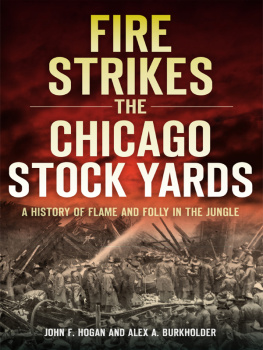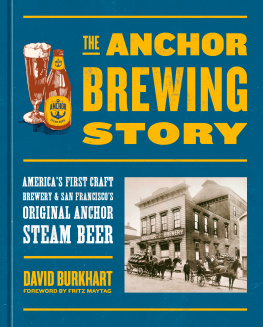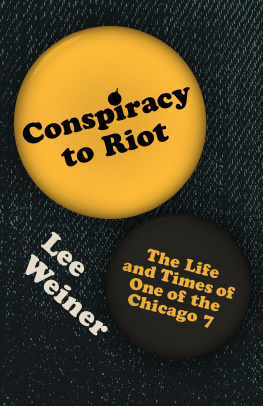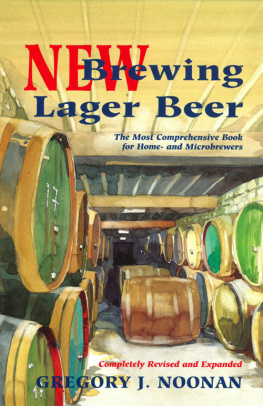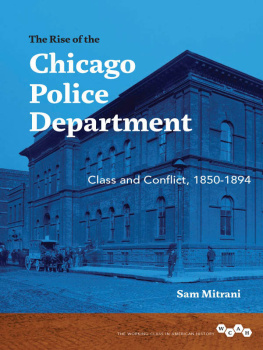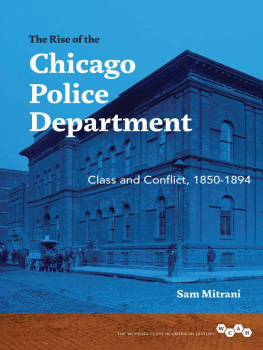Hogan John F. - Great Chicago Beer Riot, The: How Lager Struck a Blow for Liberty
Here you can read online Hogan John F. - Great Chicago Beer Riot, The: How Lager Struck a Blow for Liberty full text of the book (entire story) in english for free. Download pdf and epub, get meaning, cover and reviews about this ebook. year: 2015, publisher: Arcadia Publishing Inc., genre: Politics. Description of the work, (preface) as well as reviews are available. Best literature library LitArk.com created for fans of good reading and offers a wide selection of genres:
Romance novel
Science fiction
Adventure
Detective
Science
History
Home and family
Prose
Art
Politics
Computer
Non-fiction
Religion
Business
Children
Humor
Choose a favorite category and find really read worthwhile books. Enjoy immersion in the world of imagination, feel the emotions of the characters or learn something new for yourself, make an fascinating discovery.

- Book:Great Chicago Beer Riot, The: How Lager Struck a Blow for Liberty
- Author:
- Publisher:Arcadia Publishing Inc.
- Genre:
- Year:2015
- Rating:5 / 5
- Favourites:Add to favourites
- Your mark:
- 100
- 1
- 2
- 3
- 4
- 5
Great Chicago Beer Riot, The: How Lager Struck a Blow for Liberty: summary, description and annotation
We offer to read an annotation, description, summary or preface (depends on what the author of the book "Great Chicago Beer Riot, The: How Lager Struck a Blow for Liberty" wrote himself). If you haven't found the necessary information about the book — write in the comments, we will try to find it.
Hogan John F.: author's other books
Who wrote Great Chicago Beer Riot, The: How Lager Struck a Blow for Liberty? Find out the surname, the name of the author of the book and a list of all author's works by series.
Great Chicago Beer Riot, The: How Lager Struck a Blow for Liberty — read online for free the complete book (whole text) full work
Below is the text of the book, divided by pages. System saving the place of the last page read, allows you to conveniently read the book "Great Chicago Beer Riot, The: How Lager Struck a Blow for Liberty" online for free, without having to search again every time where you left off. Put a bookmark, and you can go to the page where you finished reading at any time.
Font size:
Interval:
Bookmark:
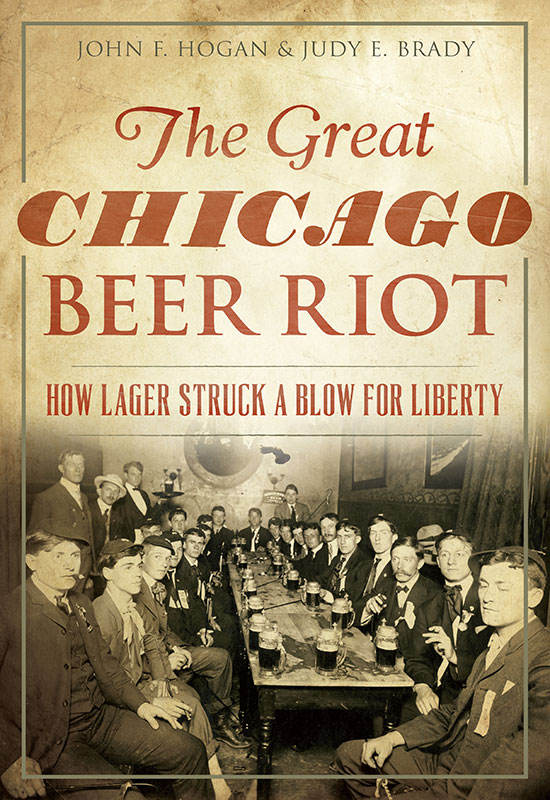

Published by The History Press
Charleston, SC
www.historypress.net
Copyright 2015 by John F. Hogan and Judy E. Brady
All rights reserved
First published 2015
e-book edition 2015
ISBN 978.1.62585.634.0
Library of Congress Control Number: 2015948353
print edition ISBN 978.1.46711.890.3
Notice : The information in this book is true and complete to the best of our knowledge. It is offered without guarantee on the part of the authors or The History Press. The authors and The History Press disclaim all liability in connection with the use of this book.
All rights reserved. No part of this book may be reproduced or transmitted in any form whatsoever without prior written permission from the publisher except in the case of brief quotations embodied in critical articles and reviews.
In memory of our parents:
Vivienne E. Cooper Brady Liddell and Raymond I. Brady Cecilia Buckley Hogan and Francis J. Hogan
CONTENTS
PREFACE
In the 2012 work Fire Strikes the Chicago Stock Yards (The History Press), Alex Burkholder and John wrote, Fire, as much as meat packing, railroads, hardball politics or icy blasts off Lake Michigan, has defined the evolution of the city. The same could be said about beer, so now, in a small way, thats what were attempting to do.
A number of fine books and articles have been written about Chicagos history of beer brewing and drinking. Ours is an attempt to show beer and drinking in general as a catalyst for historic sociopolitical changes already in the making. Many associate beer and Chicago with Prohibitionthe Jazz Age, speakeasies, Al Capone and rival gangsters battling with machineguns over distribution territories. This is part of the citys history, to be sure, a story thats been told many timesperhaps too many. Our narrative goes back one hundred years earlier to about the time when Chicagos first full-scale commercial brewery, started by German immigrants William Haas and Conrad Sulzer, began operation. This happened in 1833, the year Chicago became a town. Before then, thirsty early settlers had to depend on one or two primitive taverns that made their own ale.
Over the next two decades, saloons began popping up everywhere until they outnumbered churches seventeen to one. The arrival of the ethnic drinking establishment in the mid-nineteenth century represented something new: a place where immigrants could gather among their own kind, away from the suspicious eyes of the native-born establishment, which disliked and distrusted them. The neighborhood saloon was particularly dear to the German community. It offered a social club, a gathering place for neighbors and a link to the old country. When the citys prohibitionist administration chose to ban the sale of beer and other alcoholic beverages on Sunday, the workers only day off, it was felt that the ruling class had gone too far.
The riot that followed, we suggest, was not an isolated incident but rather the culmination of tensions long in the making. The late 1840s unleashed a confluence of forces that directly or indirectly provoked the Lager Beer Riot. German and Irish immigrants began pouring into the city, many of the former fleeing the failed Revolution of 1848 and many of the latter escaping the famine of 184648. They brought their thirst with them, much to the displeasure of an openly hostile ruling class.
Also in 1848, the prohibitionist and womens suffrage movements gained new momentum following a historic gathering at Seneca Falls, New York. The two campaigns sometimes moved in lockstep to protect family life against the sorrows inflicted by alcoholism. By the mid-1850s, support for prohibition was rapidly gaining strength in Illinois and other northern and eastern states. Finally, in the last few years before the outbreak of the Civil War, passions over the slavery question were near boiling. U.S. Senator Stephen A. Douglas of Illinois, who sought compromise on the issue, came close to getting manhandled when he addressed a hostile audience. The city definitely was on edge by April 1855, when Mayor Levi Boone made his ill-advised decision to ban the sale of alcoholic beverages on Sunday.
Not long after the riot had ended, Chicago was on its way to forming a modern police department. Prohibition and the anti-immigrant Know-Nothing Party fell into decline. New ethnic and political coalitions began to take shape, and the realignments energized the young Republican Party, helping to send a somewhat obscure Illinois politician named Abraham Lincoln on a path to the White House.
A number of stalwartsgluttons for punishment, as author John Hogans late mother would have called themre-upped for duty on this project.
A big thank-you goes to previous co-author Alex Burkholder, who contributed his graphic arts skills along with his knowledge of early Chicago. The talents of well-known Chicago artist Matthew Owens are on display at several junctures. Author Carla Owens, Matthews spouse, provided invaluable assistance. And a huge helping of thanks to talented writer and editor Andrea Swank for compiling the index.
Several divisions of the Chicago Public Library system distinguished themselves as usual. Foremost were Lyle Benedict and his staff at the Municipal Reference Collection. Their colleagues at Special Collections and Preservation, along with those at the Conrad Sulzer Regional Librarys North Side Neighborhood History Collection, provided invaluable help selecting many of the images that photo pro Charles Ezaki readied for publication.
The staffs at the Chicago History Museum and Newberry Library were always ready to help, as they have been through three previous endeavors. Our neighborhood library, the John Merlo Branch, once again offered a welcoming retreat for writing, away from cellphones and other distractions of daily life.
History Press project editor Ryan Finn offered many improvements to these pages and was a pleasure to work with. (Please dont flunk us, Ryan, for ending a sentence with a preposition.) One final tip of the cap goes to Senior Commissioning Editor Ben Gibson, whose support and wise counsel have sustained us every step of the way.
COMING TO AMERICA
Unlike many of their countrymen before and after, a significant number of German and Irish immigrants who arrived in Chicago and other U.S. cities in the late 1840s and early 1850s were motivated by fear more than the universal promise of American life. They were running away from something more than toward any shining city on a hill. Often they fled with few belongings, desperate to escape disease, death, repression, arrest and imprisonment. Some were literal fugitives, including jail escapees. All were refugees. Anywhere but here became their mantra.
Europe in 1848 saw itself engulfed in a wave of uprisings against the monarchial power structures left in place after the 1815 Congress of Vienna reconfigured the continent in the wake of the Napoleonic Wars. It was as if the spirit of the French Revolution had lain dormant for more than five decades and then experienced a reawakening among peoples grown restive under the rule of kings, princes, emperors and sundry potentates. Revolts began in January 1848 in Sicily and southern Italy and spread to France the following month. Austria, Belgium and Switzerland became swept up in the rise against the old autocratic order. Even Ireland, ravaged by famine since 1845, experienced a brief, futile rebellion against the British Crown.
The revolutionary fervor reached Germany in March, when a flood of meetings and demonstrations organized by the middle class, supported by peasants, artisans and workers, swept the leaders of the liberal opposition into power in Bavaria, Hanover, Saxony and other regions, according to Golo Mann in
Font size:
Interval:
Bookmark:
Similar books «Great Chicago Beer Riot, The: How Lager Struck a Blow for Liberty»
Look at similar books to Great Chicago Beer Riot, The: How Lager Struck a Blow for Liberty. We have selected literature similar in name and meaning in the hope of providing readers with more options to find new, interesting, not yet read works.
Discussion, reviews of the book Great Chicago Beer Riot, The: How Lager Struck a Blow for Liberty and just readers' own opinions. Leave your comments, write what you think about the work, its meaning or the main characters. Specify what exactly you liked and what you didn't like, and why you think so.

